Piña Colada Festival: A Brotherhood of Music, Musicians, and Art
especiales

The 22nd edition of the Piña Colada Festival concluded just one week ago. Cuba’s most musical cocktail once again filled the people of Ciego de Ávila with joy and art, along with those who followed the event through media and social networks.
More than one hundred artistic groups —local, national, and international, both professional and amateur, including cultural heritage ensembles— transformed this central province into a grand stage where culture extended far beyond the large public squares in the main municipality and nearby Morón. Cultural centers run by ARTEX, the headquarters of UNEAC and AHS, local development projects like Patio del Mulato Acelera’o, schools, production facilities and social institutions, correctional facilities, maternity homes, senior residences, orphanages, and entire communities welcomed popular musicians, actors, and actresses with the familiar warmth, hospitality, and gratitude that define the festival.
“We did it!” In particularly difficult times, this expression resonates with emotion among the event’s Organizing Committee, provincial authorities, participating artists, and accredited press. Many of them no longer view the festival as mere guests but as active participants who live the experience intensely.
“There is so much love in these projects, which start with young people in mind and continue year after year despite the challenges. It is an event that brings together many musician friends from different genres. It connects us with the audience in Ciego. We always look forward to the moment when we can present our work there. I’ve had a long-standing friendship with the Organizing Committee and with Arnaldo since our school days, so it feels like a celebration—a celebration of our alternative music, of musical fusion, of Cuban music,” said David Blanco.
Another frequent guest, Adrián Berazaín, shared: “My birthday is April 5, and I’ve celebrated it there more than once. It’s always beautiful to return to Piña Colada, where I got my start, where I had the opportunity to perform for the first time. It feels like going back to that home where your family is, where you’ve celebrated so many joyful moments throughout your life.”
Among the actors who returned were Bárbaro Marín, Denys Ramos, and Belissa Cruz, all of whom have already committed to attending the 23rd edition. Ary Fonseca made her debut this year and told Cubavisión Internacional she was captivated by the experience.
“The audience in Ciego de Ávila is incredibly appreciative, and for us artists, it is deeply rewarding to know that people enjoy our work and express it with such warmth and positive energy wherever we go,” she said.
“This is my first time at the Piña Colada Festival,” said Januel Hernández, the charismatic “Ale” from Sábados de Gloria, speaking to the press. “When they contacted me, I immediately said yes because people had already told me how much fun it is. You get to do what you love, connect with the audience, and that kind of energy means everything to me.”
Xavier Chao added that he was leaving with the best memories of the people of Ciego de Ávila. He even discovered family members he had never met. Like many others, he expressed a desire to return. Perhaps they will all meet again next year and join an idea that Belissa suggested to the organizers. “Let’s put together a show with the actors next year. We could stage a scene from a Cuban play. I’d love to do something from Santa Camila de La Habana Vieja, for example.”
The Piña Colada Festival is a truly special blend. It leaves no hangover, only a healthy addiction that makes everyone involved eager to return.
“From the moment we released the first announcement about the festival, we began receiving calls and messages from artists, friends, young people, and people of all generations who want to participate,” said Arnaldo Rodríguez, director of Talismán, a proud native of Ciego de Ávila and President of the Piña Colada Festival.
Of course, the dream is to include everyone. However, as Arnaldo explained, the organizers must make selections each year, balancing public demand, the festival’s founding concepts, and the current circumstances. “It is a great challenge to organize a festival like Piña Colada in the country’s present conditions,” he acknowledged. “But we have not abandoned any of the traditional events such as the Music and Youth Symposium and the Latir Avileño Cultural Crusade. On the contrary, the festival grows each year. In 2024, we introduced the vocal ensemble gathering ‘Corávila,’ which proved to be very successful and will continue moving forward.”
He also noted a new initiative in Morón: “El Águila de la Trocha. International Meeting of History, Culture, and Traditions.” This event brought together participants from ten countries across various regions and highlighted Ciego’s own popular traditions, which blend strong Caribbean and Hispanic heritage.
This space was dedicated to the 150th anniversary of the first crossing of the Júcaro to Morón Trocha by Mambí troops led by Máximo Gómez. It also paid tribute to Simón Reyes, a local hero famously known as “El Águila de la Trocha” for his skill in outwitting Spanish military forces. Appropriately, the meeting included a theoretical session focused on both local and national history.
“This is an event we will continue to hold within the Piña Colada Festival. I am confident it will shine even brighter in the future. The people of Morón embraced it with genuine affection. The opening parade was spectacular, conceived and directed by Orlando Concepción. The community enthusiastically joined in, celebrating with a symbolic giant machete crafted by local artists,” said Arnaldo.
He concluded, “This has been another unforgettable edition. Almost without realizing it, without being able to fully enjoy the wide range of activities it encompasses, the festival has grown into something monumental. Music, culture, and tradition have taken center stage, and the people have been directly involved in every aspect. Piña Colada is a diverse and inclusive festival. Designing each night with specific musical styles is always a complex task. Achieving interaction between rumba and rock, jazz, reggaeton, traditional Cuban dance music, and trova —ensuring that this entire brotherhood of music and musicians comes together at each edition— is truly a challenge.”
Translated by Sergio A. Paneque Díaz / CubaSí Translation Staff



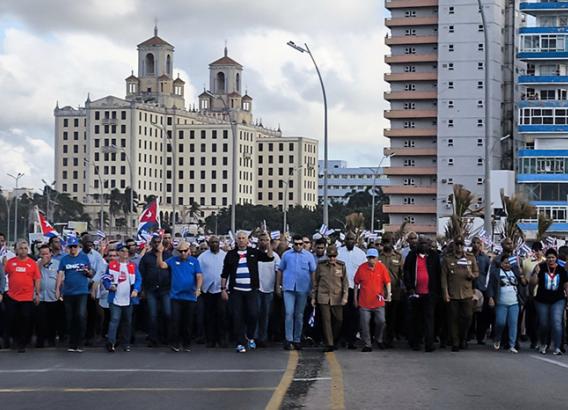
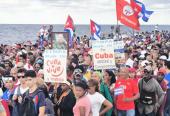

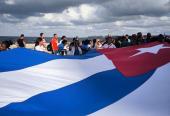
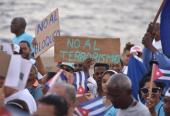
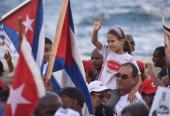
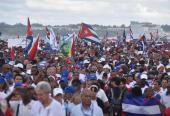


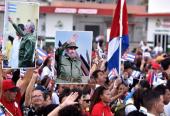

Add new comment